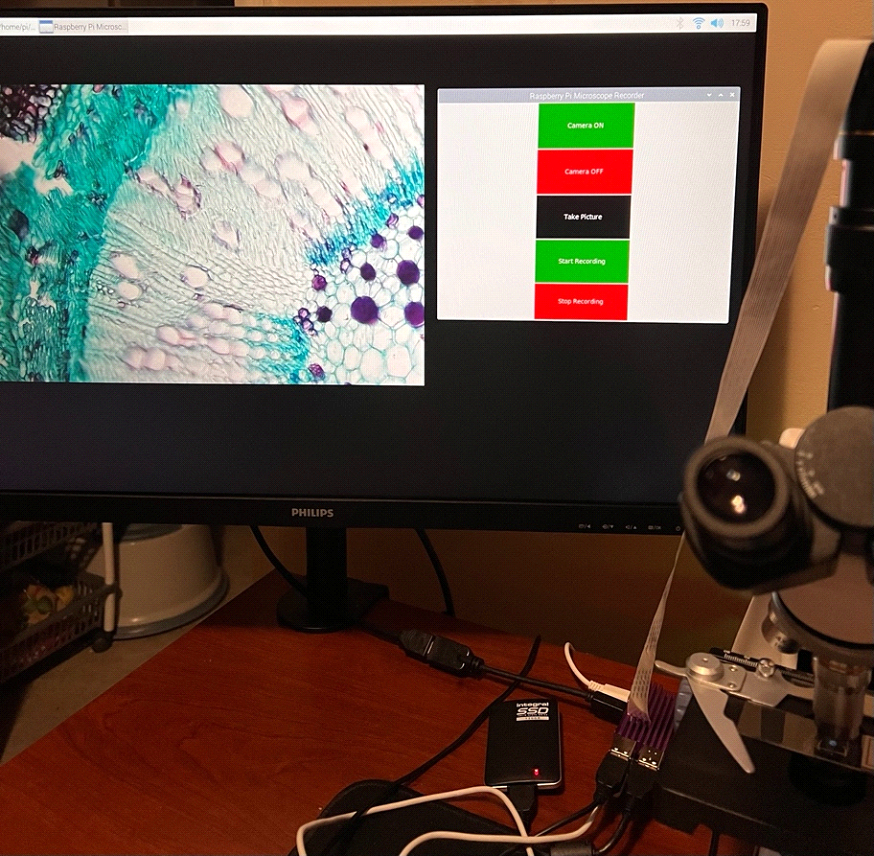Raspberry Pi Captures Microscopic Wonders with HQ Camera
In a market with so many proprietary devices and one-function machines, it can be a big help to have something versatile like a Raspberry Pi on hand. No one knows that better than Gary Croft who’s using a Raspberry Pi 4 with a Raspberry Pi HQ Camera to capture impressive footage from his trinocular microscope. According to Croft, off-the-shelf cameras are notably expensive but the Raspberry Pi HQ Camera has proved to be a more affordable and comparable alternative.
Gary Croft specializes in computer science these days but has always had an affinity for biology. Croft explains, his foray into microbiology began as a child with an old microscope gifted to him as a child from his grandfather. Today, Croft has a more capable trinocular microscope designed to not only view specimens but also record them.
In this project, Croft is using a Raspberry Pi 4 to process input from the HQ camera module which is connected to the microscope via the C mount. The Pi 4 is running a GUI interface to control the camera as well as convert the video files to a more compatible .mp4 format. Something enabled by the extra power provided by the Raspberry Pi 4.
Croft calculates the total camera investment at around $115 (£85) without factoring in the cost of the Pi or the trinocular microscope. In the end, his custom camera rig produces high-quality images and HD video at 30 fps. Off the shelf alternatives start at around £350 ($470) and only provide approximately 10 fps.




The code used in this project is written in Python and is open source for users to explore. Croft's solution was built using Python and the tKinter GUI framework. Croft created a simple user interface of five buttons which handle turning the camera on / off, take picture and start / stop recording.
If you want to get a closer look at this Raspberry Pi project, head over to Croft’s GitHub page and keep an eye out for future updates. Croft indicated plans for additional GUI controls for things like ISO settings, time-lapse features and frame rate adjustment. Croft is also looking into adding a streaming option so that the footage can be shared in video calls. In the meantime, you can check out his official channel on YouTube to see some of his cool microscopic findings.
Get Tom's Hardware's best news and in-depth reviews, straight to your inbox.

Ash Hill is a contributing writer for Tom's Hardware with a wealth of experience in the hobby electronics, 3D printing and PCs. She manages the Pi projects of the month and much of our daily Raspberry Pi reporting while also finding the best coupons and deals on all tech.
